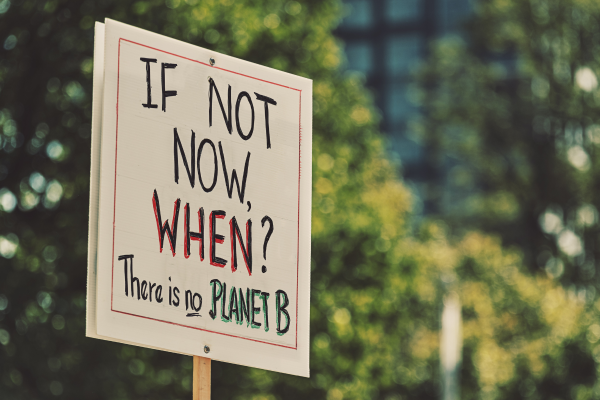
By: Risa Sackman, Director of US Education, FHI 360
The mission of America’s public education system has been to provide young people with the knowledge and skills they need to thrive as youth, as adults, as citizens, and as leaders. But while the mission may remain the same, what students need to know and be able to do must change to keep up with the evolving world around us. Right now, the world is facing one of the most urgent challenges of our times: climate change.
Making sure young people develop the mathematical understanding to recognize the impact of changing temperatures over time, the scientific concepts to explain the causes and potential solutions, and the awareness and know-how to advocate, build civic engagement and change systems and behaviors are all key to educating youth to be the future stewards of our planet. Research shows that climate change education is the strongest predicator of climate change awareness and can play a significant role in mitigating and adapting to this challenge. While education is only one strategy for dealing with climate change, a systemic educational commitment to equipping all students across the country with the knowledge, skills, attitudes and behaviors they need to address the climate crisis is an essential part of a larger plan for sustainable solutions.
In 2023, my team conducted a literature review and interviewed climate change education experts and practitioners to identify holistic approaches and strategies that school systems and education programs were using that could provide suggestions for how others can meet this need in sustainable, scalable ways. The white paper that culminated from this work proposed four strategic recommendations to advance climate change education in the United States:
- Enact policy to support climate change education at national, state, district, and school levels.
- Provide access to high-quality curricula and materials that are grounded in scientific evidence.
- Support educators with training and professional development.
- Scale up out-of-school time and work-based learning models.
It has been our hope that these recommendations help create opportunities to integrate climate change education as part of systemic solutions, rather than put the responsibility on the shoulders of individual educators, who are already tasked with so much.
Since the publication of the white paper, we have heard from educators from around the country about how helpful these recommendations have been to their work. But they have also asked us to provide examples of what these recommendations look like in practice in schools, districts, and programs that are at various stages of this work. Seeing the work in action, they explained, would provide a realistic picture that can inform their own efforts to adopt or adapt these strategies and practices.
In response, we’re sharing the stories of how two very different districts used systemic approaches that combine state and district policy, the community, district and school facilities staff, and educators to plan and implement climate change education. Organized around each of the white paper’s four recommendations, these spotlights from the field highlight how the districts set a common vision, engaged a range of government and community partners, identified curricula, built the capacity of educators — and even tapped into natural resources in their own surroundings. The stories also illustrate some challenges and obstacles districts may face, reflecting the reality of climate change education work where progress is nonlinear, resources are tight, and competing demands can limit the efforts of even the most committed educators.
These spotlights from the field tell the stories of:
- Berkeley Heights Township School District in New Jersey, showcasing how a small district in a New York suburb drew on partnerships, local grants, staff and student passion, and a district-wide commitment to professional development to advance climate change education, including outside the science classroom.
- Durham Public Schools in North Carolina, showcasing how a district that serves both urban and rural students used a multifaceted approach to expand climate change education across disciplines by engaging local partners, supporting teachers through training and resources, and providing students workforce opportunities.
Strengthening climate change education is a challenging but critical step in addressing the climate crisis. Our white paper’s four recommendations and the experiences of committed school districts like Berkeley Heights and Durham offer education leaders and policymakers important strategies and insights for starting or moving forward on their own journeys to effective climate change education that is sustainable and serves all K–12 students.
Photo Credit: Canva
